Whether it’s candies, screws, or pens, the small items in life always seem to get lost. Containers, specifically 3D printed ones, are a great way to organize all of the things in your life so you’re not rummaging through every cabinet in your house when you need an M3 screw for your next project.
There are tons of 3D printable containers out there, each with its own features, look, and purpose. Some containers have a screw-on lid or look like a pineapple while others feature a lock mechanism or are customizable.
In the sections below, you’ll find all sorts of 3D printable containers, and we’ve briefly described each one as well as how you can make it! Enjoy!
Customizable Cylindrical
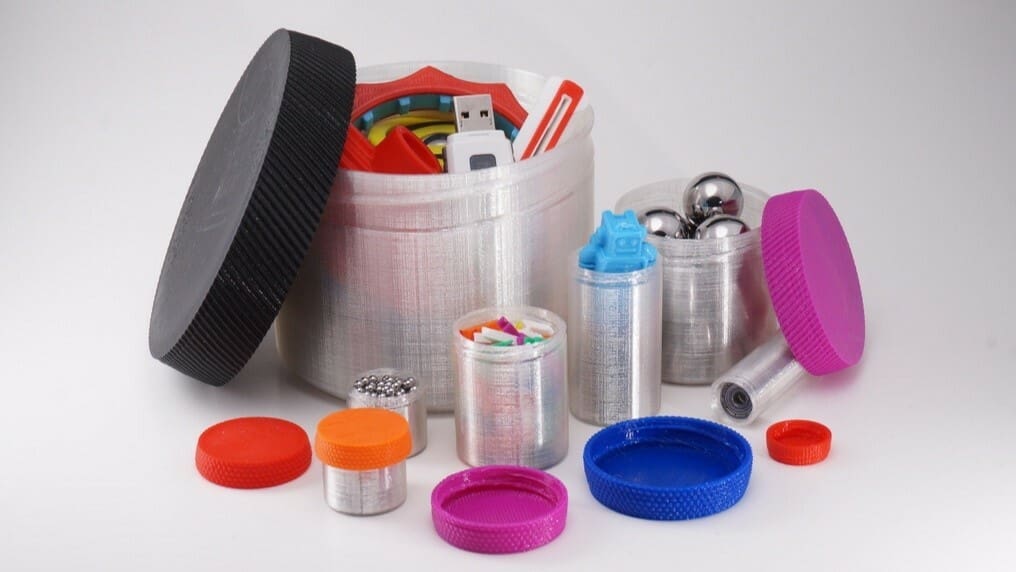
First, this cylindrical container is the perfect option for storing any of your things. It has a pretty simple design comprised of a base and a lid, and the model is customizable via Thingiverse’s Customizer app, meaning that you can adjust the dimensions of the parts based on what items you plan on storing. It’s also worth noting that the cap for this container screws onto the base of the container and has a textured outer surface to make opening the container easier.
Despite the integrated threads on the two parts of this design, the printing process should be pretty easy as the model has undergone a handful of revisions meant to ensure a successful print. And, while the creator didn’t provide any printing suggestions, one recorded maker listed that they used a 0.2-mm layer height with a 15% infill density. Additionally, no support structures are needed because there are no significant overhangs.
- Who designed it? wstein
- How printable/popular is it? This customizable container has over 2,000 remixes and 54 recorded makes. So many people have successfully made one of these containers, and you can too!
- Where to find it? Thingiverse
Pineapple
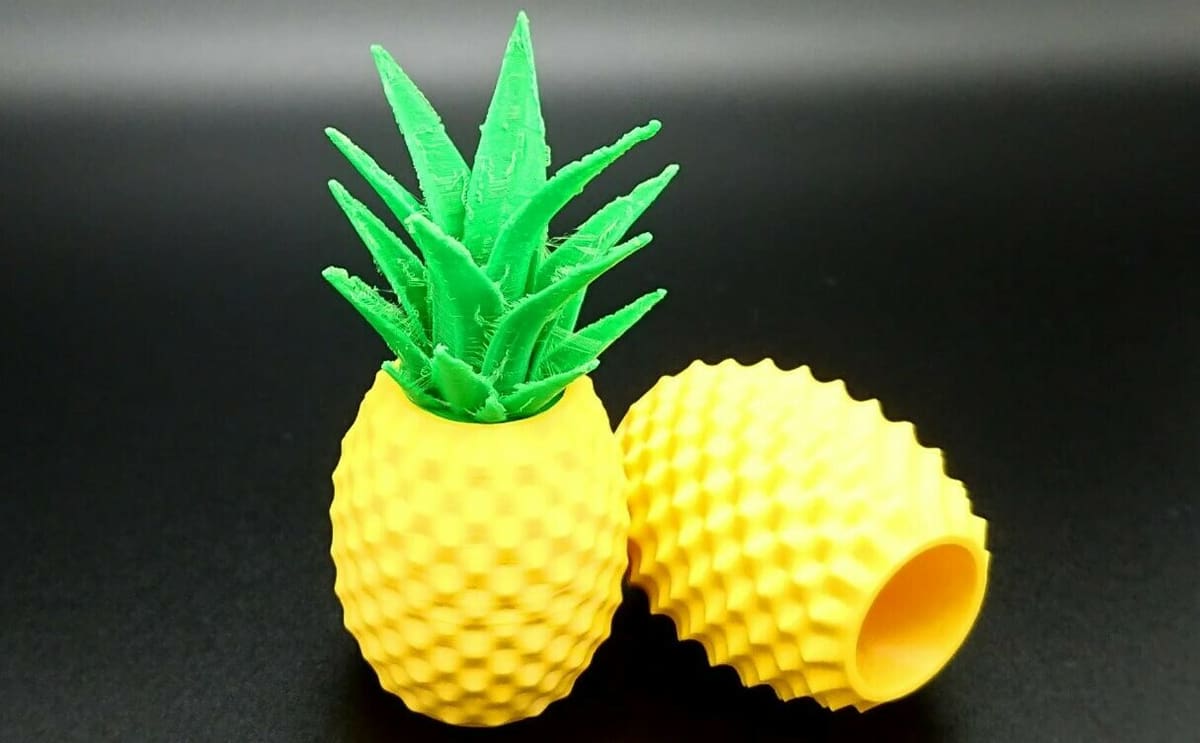
Second, this pineapple container is both fun and super useful for storing small items, such as sweets, keys, screws, and more. The container, made up of a base and a top, comes in two variations: smooth and spikey. Both options provide you with the same amount of space for storing things, but the spikey one has sharper scales on the outer surface.
The designer also mentioned that you could scale the model based on what items you plan on storing inside your pineapple, so feel free to do so. As for printing the model, the maker listed that they used a 15% infill density, a 0.2-mm layer height, and no supports or a raft.
- Who designed it? DasMia
- How printable/popular is it? This pineapple container has over 500 downloads with 11 successful community makes.
- Where to find it? Printables
Bottle Cap
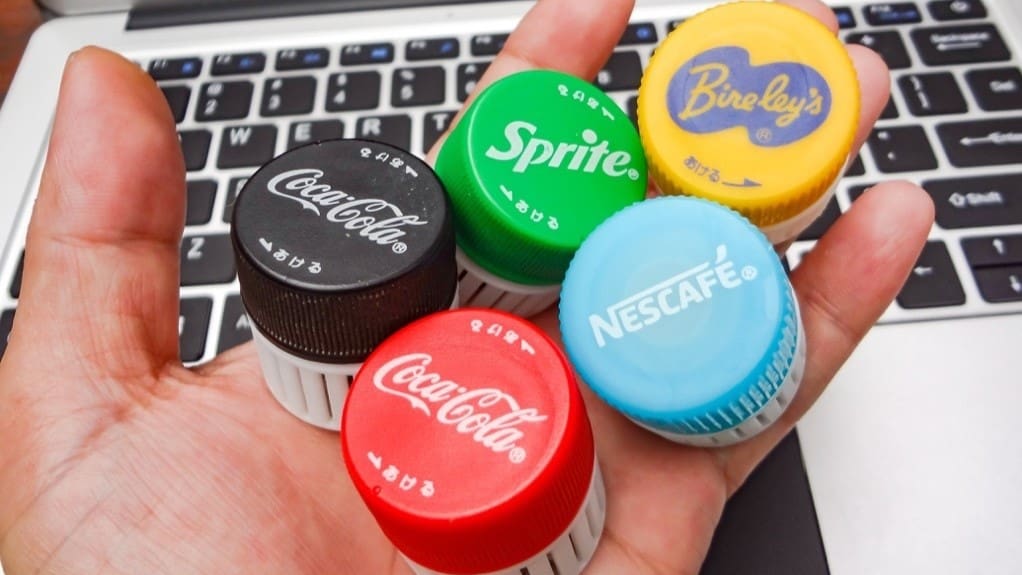
Next, this bottle cap container might not be very large, but it’s a fun way to store small items, like bearings or paper clips. The cool part about these is that they work with a soda bottle cap as the lid, so you actually only have to 3D print a single part. On top of making the container sealable, the use of the cap also provides a new use for the item so it doesn’t end up in the trash, which is always a good thing!
While most people opt to use a spare bottle cap, the designer has provided a 3D printable version of the screw-on cap so you can make the container even without a spare soda bottle. Additionally, with the 3D printable version of the cap, you can scale the parts up to make a larger container, as the normal one doesn’t offer too much space (enough to fit a skateboard bearing).
As for printing, the designer listed a handful of the slicer settings they used. These include a 30% infill density, a 0.2-mm layer height, and neither supports nor a raft. They also mentioned that they printed the parts in PLA filament, but any material should work fine!
- Who designed it? Tokyo_Bird
- How printable/popular is it? This fun-size cap container has 39 recorded makes, 21 remixes, and over 27,000 downloads!
- Where to find it? Thingiverse
Dead Battery
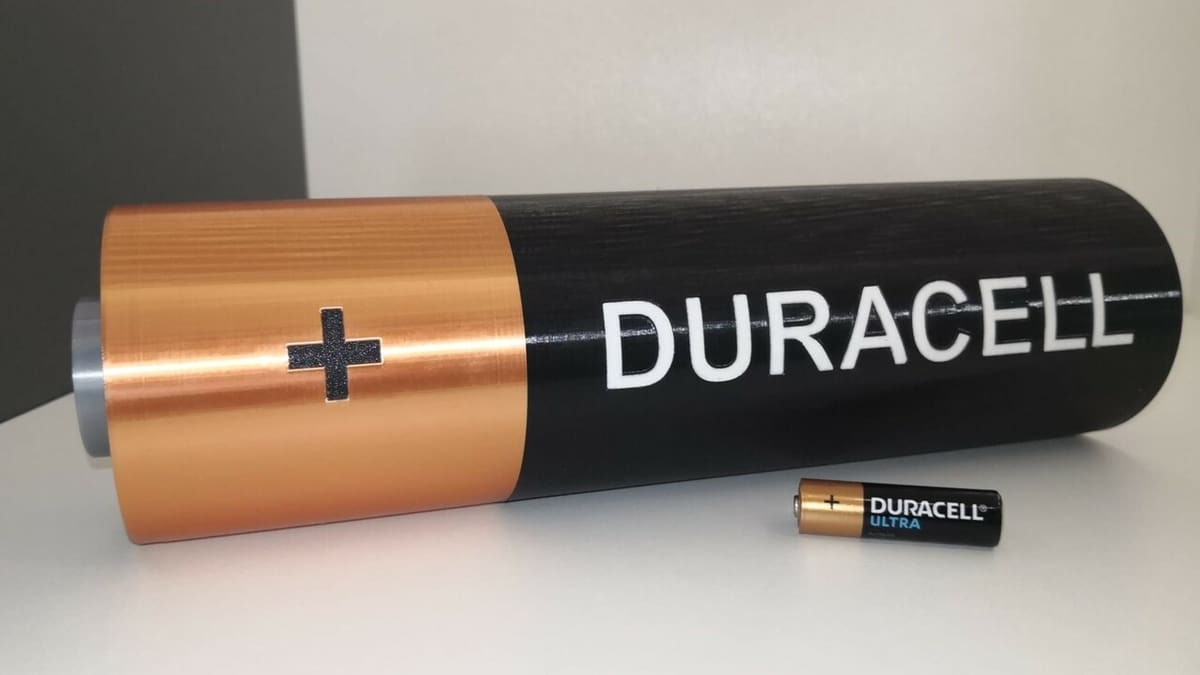
Next, this dead battery container was designed to look like a large AA battery and was originally meant for storing dead batteries, but it can be used to store just about anything. The battery container is made up of six 3D printable parts, and the lid screws onto the container to keep whatever you’re storing inside.
It’s also worth noting that the project was divided into six parts so you can print each in a different color to make the assembled battery container look just like a real Duracell battery, only 10 times the size. But, if you don’t have filaments that match the colors, you can always paint the parts, instead.
As for printing, the designer listed that they used a 0.2-mm layer height with no supports or any rafts. And, a recorded maker posted some pictures of their terrific print and stated that they used various PLA filaments with a 25% infill density.
- Who designed it? Elite_Worm
- How printable/popular is it? This dead battery container project has 22 recorded makes, 2 remixes, and about 5,000 downloads!
- Where to find it? Thingiverse
Grenade
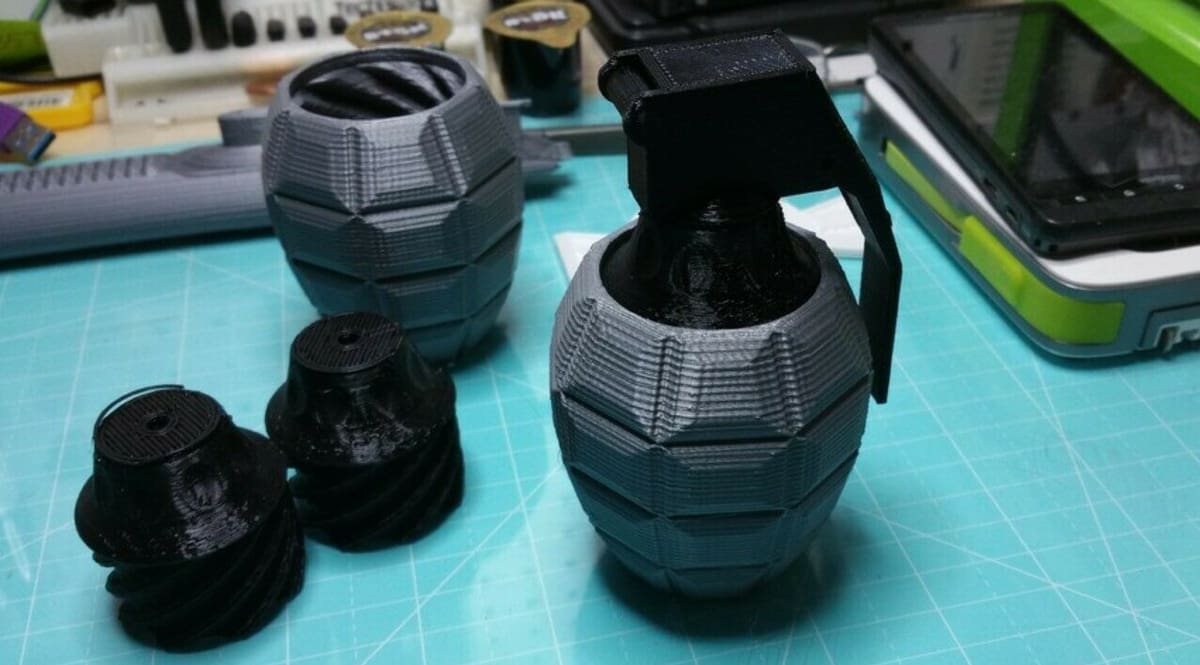
Next, this 3D printable, non-functional grenade container is another great storage solution for all your small items. The container was designed to look just like a frag grenade like the ones you would see in a video game or movie, with a geometric outer texture and a large safety lever.
The grenade container is made up of four 3D printable components, including the grenade shell, a screw-on lid, a safety lever, and the (fake) detonator head. The first two parts can be found on the project page linked below, but the other two, as stated by the designer, must be downloaded from a different Thingiverse page.
Printing the parts should be a breeze, too. While the designer didn’t recommend any print settings, one recorded maker listed that they used a 0.2-mm layer height without any support structures or a raft. Once you’ve got all the parts printed, you can easily assemble them by screwing together the shell and lid and then gluing the other two parts to the top of the container.
- Who designed it? Octovir (grenade); Landru (lever)
- How printable/popular is it? This grenade-shaped container has 17 recorded makes as well as over 8,000 downloads.
- Where to find it? Thingiverse (grenade); Thingiverse (lever)
Knurled Twist
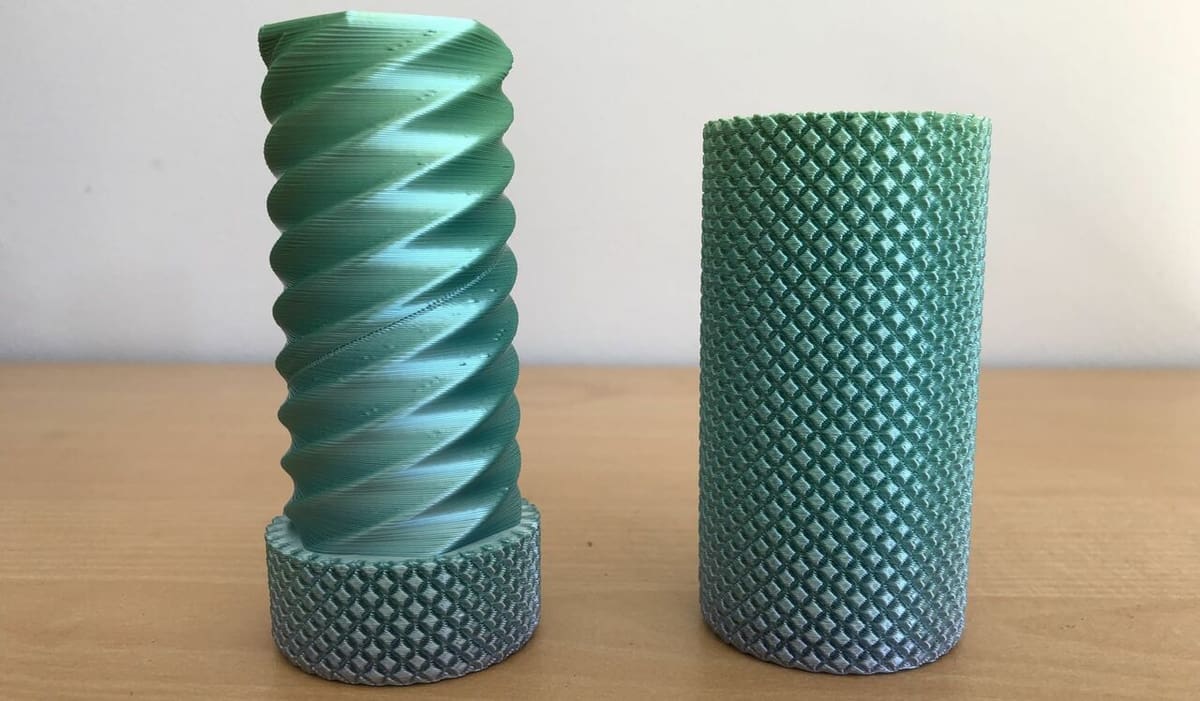
The knurled twist container is a fun cylindrical case with two parts, each with knurled screw threads that make opening and closing it super easy. This container, given its size and shape, is probably best suited for storing small and long items, like a lighter, a small pen, or some coins. However, as some makers have done, you can scale up the parts to increase the storage capacity to best suit your needs.
The designer listed that they used a 0.15-mm layer height with a 20% infill density among their printing settings. This lower-than-normal layer height was likely used to ensure dimensional accuracy for the threads, as they can be difficult to print with larger layer heights. The designer also noted that they didn’t use any supports or a raft for the print jobs, so it should be an easy model to recreate.
- Who designed it? rayperkins
- How printable/popular is it? This knurled twist container has over 90 recorded makes as well as 16 remixes. Because the project is so popular, we suspect that you should be able to easily make your own!
- Where to find it? Thingiverse
Lockable
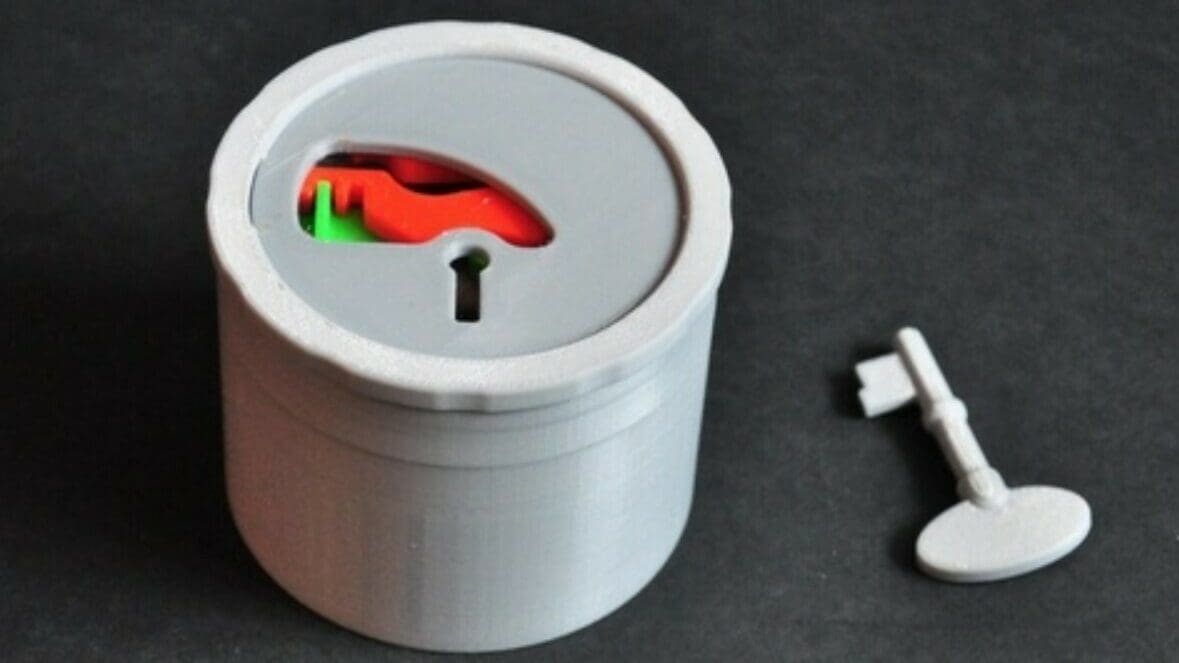
Need a more secure storage solution? Well, maybe this 3D printable lockable container is for you! The container features a special lock mechanism that only opens with a unique 3D printable key; no more stolen sweets!
As you might expect from a container of this complexity, you’ll need to print a handful of parts to make this model. Sadly, though, no print settings were listed, so you’ll have to use your intuition when adjusting the slicer settings. But, once you have all of the parts printed, you can use the detailed assembly diagrams on the project page to build the final product.
- Who designed it? woodenclocks
- How printable/popular is it? This lockable container has over 4,800 views and 354 downloads.
- Where to find it? MyMiniFactory
Cap Nut
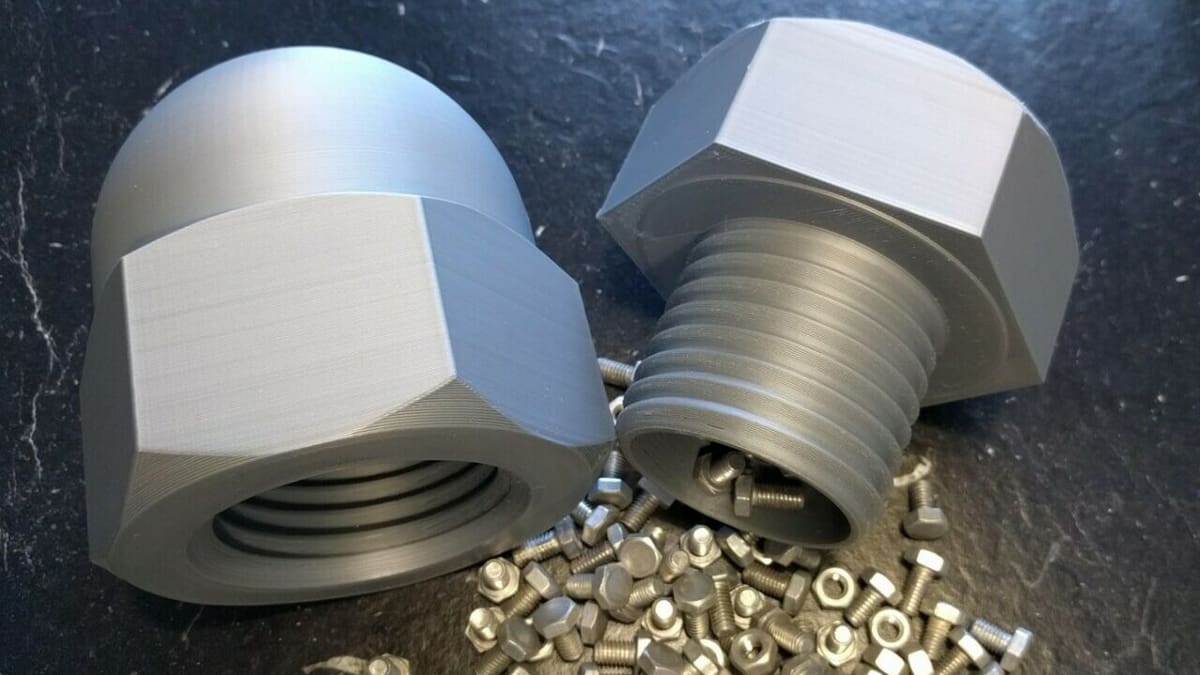
Whether you’re storing screws and nuts or other items, this large cap nut is a great container solution that offers a lot of storage space. The container, as shown in the image above, is made up of two large 3D printable parts that resemble a standard cap nut. Furthermore, the two parts screw together to ensure that whatever items you’re storing don’t escape.
While the models feature integrated threads, they should still be pretty easy to print as the threads are decently large. On this note, the designer also mentioned that they made the threads have approximately 0.5-mm of wiggle room, so, even if your printer isn’t perfectly dimensionally accurate, the two parts should still screw together.
Also, the creator of this project listed that they printed the parts with various layer heights, going up to 0.3 mm, and all worked fine. No other print settings were provided, though, so you’ll have to use your own slicer profile.
- Who designed it? blecheimer
- How printable/popular is it? This cap nut container has a little over 4,000 views with around 800 downloads.
- Where to find it? MyMiniFactory
Shipping Container
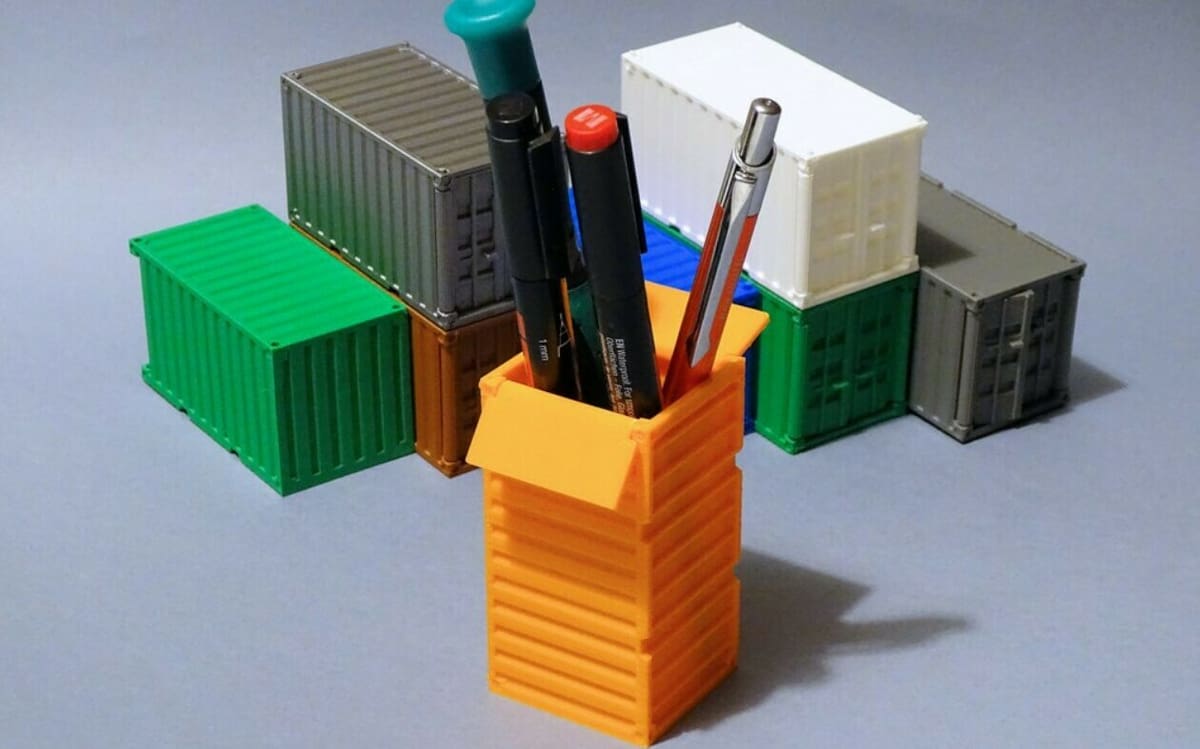
Next, this mini 3D printable shipping container is a fun storage option that’s perfect for storing small items, such as sweets, coins, and pens. The model is well-designed and is made up of a few 3D printable parts, including the base container and some hinges and pins, which, when assembled, allow the doors of the container to swing open. The outer surface of the model also has the same texture as a real shipping container, which is a nice aesthetic touch.
As this design is made up of a few parts, some assembly is required. But, don’t worry; according to the designer, all you need to do is use a little bit of glue to attach the hinges and you should be good. As for printing, the designer recommends using a 0.2-mm layer height, a 100% infill density, and PLA.
- Who designed it? Printed-Toys
- How printable/popular is it? This shipping container project has 10 recorded makes with over 8,600 downloads!
- Where to find it? Thingiverse
Parametric
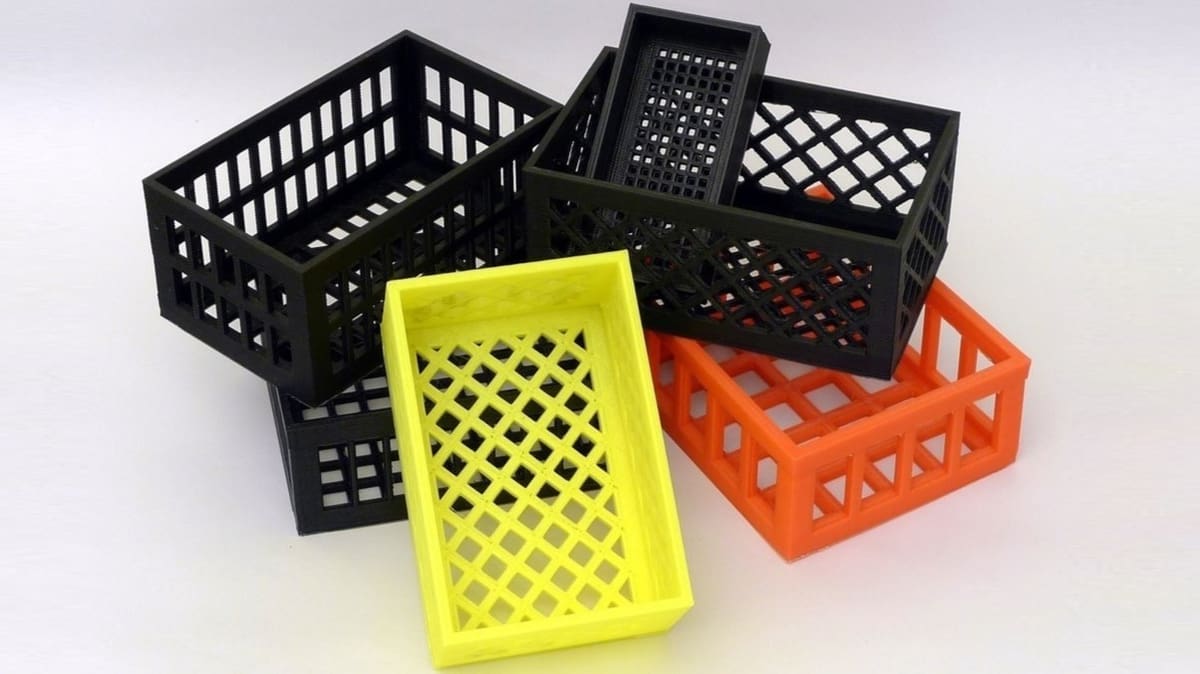
Lastly, this parametric container is another customizable option, and you can open the model in Thingiverse’s Customizer app or OpenSCAD to adjust the dimensions and other properties of the container to fit your needs. Unlike many of the other options on this list, though, this parametric container doesn’t have a lid so it’s not super portable. But, if you’re planning on leaving the container in one place (e.g. on your desk or in a drawer), then this shouldn’t be a problem.
While the creator of this project didn’t provide any slicer setting recommendations, there are a handful of recorded makes with insightful printing specifications. For example, one recorded maker posted an excellent print of their customized container and they listed that they used a 10% infill density, a 0.2-mm layer height, and no supports.
- Who designed it? Tunako
- How printable/popular is it? This simple parametric container design has 235 remixes as well as over 17,500 downloads!
- Where to find it? Thingiverse
License: The text of "3D Printed Container: 10 Best STL Files to 3D Print" by All3DP is licensed under a Creative Commons Attribution 4.0 International License.



